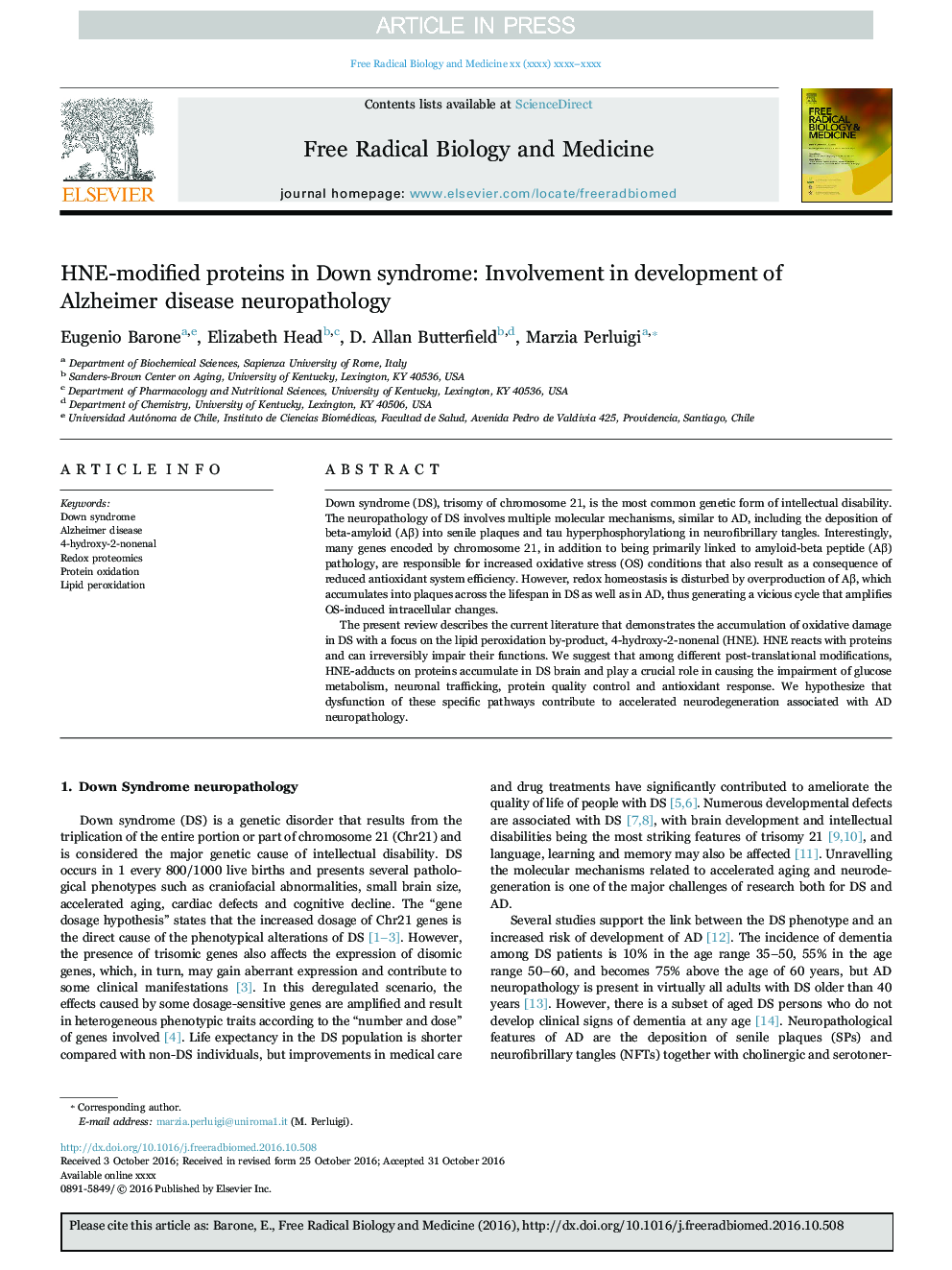| Article ID | Journal | Published Year | Pages | File Type |
|---|---|---|---|---|
| 5501651 | Free Radical Biology and Medicine | 2017 | 8 Pages |
Abstract
The present review describes the current literature that demonstrates the accumulation of oxidative damage in DS with a focus on the lipid peroxidation by-product, 4-hydroxy-2-nonenal (HNE). HNE reacts with proteins and can irreversibly impair their functions. We suggest that among different post-translational modifications, HNE-adducts on proteins accumulate in DS brain and play a crucial role in causing the impairment of glucose metabolism, neuronal trafficking, protein quality control and antioxidant response. We hypothesize that dysfunction of these specific pathways contribute to accelerated neurodegeneration associated with AD neuropathology.
Keywords
Related Topics
Life Sciences
Biochemistry, Genetics and Molecular Biology
Ageing
Authors
Eugenio Barone, Elizabeth Head, D. Allan Butterfield, Marzia Perluigi,
